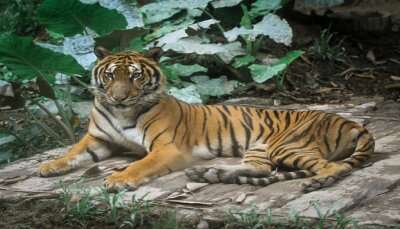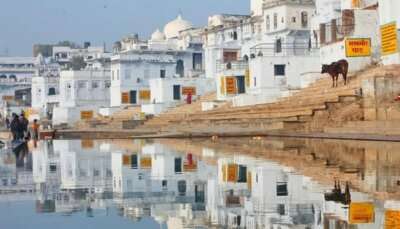Get To Know About The Rewalsar Lake For A Soothing Vacation
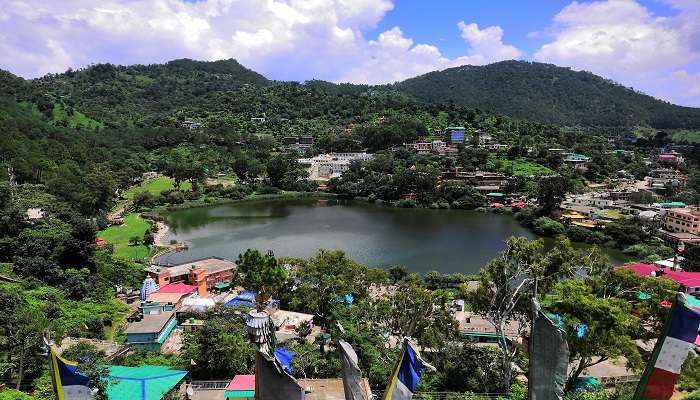
A square-shaped lake in the town of Mandi, Himachal Pradesh is well-known for its astonishing beauty – Rewalsar Lake is one of the many hidden gems of Himachal Pradesh. Also called Tso Pema, this lake holds significance and importance for many religions like Hinduism, Sikhism, and Buddhism, including Tibetan Buddhists. Two Buddhists, Padmasambhava and Mandarava, are credited for creating the lake and several religious practices, including the practice of Vajrayana. This place blends panoramic views, culture, history, and traditions. Enjoy the weather of the Himalayas as you visit this famous lake between the mountain ranges of Sikandar-Dhar and Barkot.
History Of The Rewalsar Lake
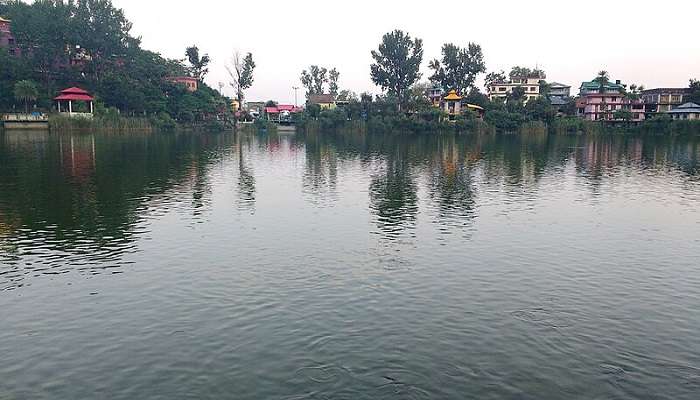
Rewalsar Lake has, over the years, gained multiple names for itself, like Tso Pema, as the Tibetans refer to it, Tri Sangam, as the locals call it, and Lotus Lake, as it has an association with the Buddhist Padmasambhava. The story of the lake’s origin dates back to the 8th century. The mystic Indian Buddhist, Padmasambhava, practised Tantric Buddhism and spread his knowledge to Tibet. As the legend goes, this great teacher and scholar was burnt alive by the King of Mandi, Arashadar, for teaching his daughter about Dharma. His pyre burnt for a week, with black smoke covering the sky and the surroundings. A miracle took place in front of the King and his people. A week later, a lake was present where the pyre was burning with Padmasambhava’s 16-year-old version, sitting on top of a lotus with Manadarva, the King’s daughter, beside him.
The most interesting part about this lake is that its shores are home to three Hindu temples – for Lord Krishna, Lord Shiva, and Sage Lomas – three Buddhist Monastries and a Gurudwara that Raja Jogendar Singh of Mandi built. Another temple that holds religious significance and is considered sacred by the people is Naina Devi Ji Temple, which is 10 km away from the lake. The story behind its making is that one of Sati’s eyes fell on this spot, and a temple was built for her. On your way to the temple, you pass the ‘Kunt Bhayo’ lake named after Devi Kunti. Arjun, her son, made that lake so that she could quench her thirst. You also pass six other akes known as “Sar”. This beautiful place is enriched with history and legends that only add to the lake’s beauty.
Must Read: Shri Chamunda Devi Mandir Chamba
Topography Of Rewalsar Lake
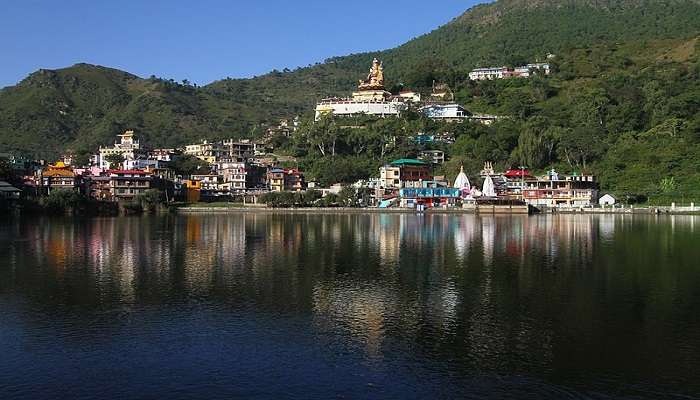
The famous Lotus Lake, also known as Rewalsar Lake, is a square-shaped lake situated at 1360 m sea level and a shoreline of 735 m. It lies 24 km away in Mandi’s Southwest direction. This wetland is 175 hectares of land, strewn with smaller lakes all over the place. This lake has been considered a wetland of the State under the National Wetland Conservation program by the Ministry of Environments and Forests. The climate is sub-tropical so it does have a bit of humidity throughout the year.
Places To Visit Near Rewalsar Lake
Enjoy the greenery and mountains of Himachal Pradesh for a relaxing vacation. Don’t forget to explore the various places around the lake to enjoy to the fullest. Here are the complete details about all the places to visit.
1. Kunt Bhayog Lake
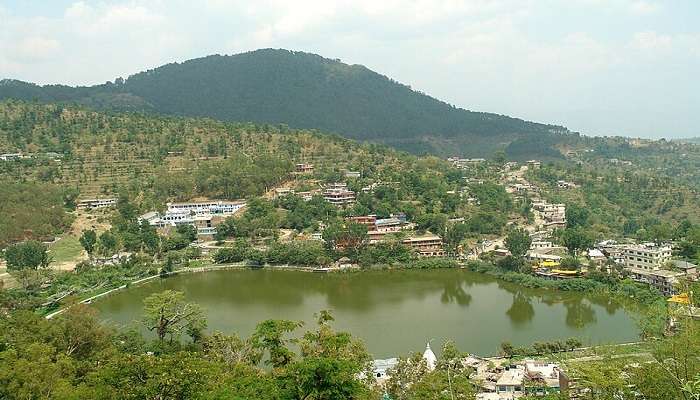
This lake stands out from the other smaller lakes around Rewalsar Lake. While the other lakes often dry out due to weather changes, Kunt Bhayog never dries out. Water is available throughout the year, used by the locals and transported to neighbouring villages. There is a Hanuman Temple that people can visit to seek the blessings of the Lord and get rid of their sins. This beautiful lake stands at an altitude of 1700 m making it serene and calm. According to the legend, after Arjuna made the lake for his mother, Bheema cleaned it, and all that dirty water, pebbles, and rocks formed the Kalasar Lake, which is said to have black or dirty water.
Suggested Read: Trekking Near Dharamshala
2. Naina Devi Temple
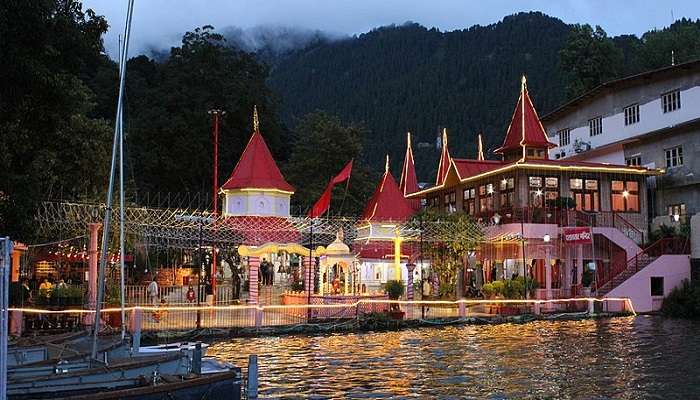
The Naina Devi Temple is situated in the Bilaspur District of Himachal Pradesh, which is 10 km away from the Rewalsar Lake. It is one of the famous ‘Peethas’ in our country. This temple was believed to be built as Sati’s eyes fell on this location. The nearest airport is in Chandigarh, which is 100 km away, the Sri Anandpur Sahib, at a distance of 20 km, is the nearest railway station, and there are well-connected roads for you to travel or even walk to the temple. Pilgrims often walk on foot to the temple while they chant ‘Jai Mata Di’. It is a comfortable walk with public toilets and refreshment stalls lining the path to the temple. You can even hire a palki to go to the temple.
3. Emaho Cafe

This cafe is for those who are not afraid to try new things—new cuisines included. They serve authentic Tibetan cuisine that you will surely want more of. Enjoy all the delicacies like Tingmo, Kothey, Shapta, and Shabaley. They serve their famous black tea right before the food is served to start the experience on a warm note, and it also helps increase your appetite. They also serve some Chinese dishes, so make sure to visit them to quiet your hunger with their mouth-watering food.
Suggested Read: Places To Visit In Hamirpur
4. Bheema Kaali Temple
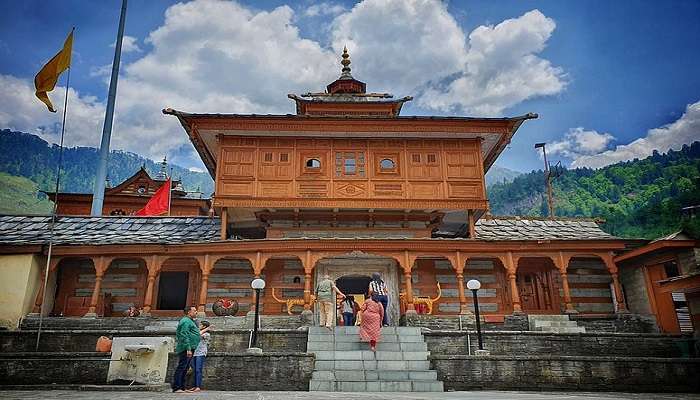
The Bheema Kaali Temple is one of the most sacred temples in the Himalayas, which is also referred to as ‘Devi Bhoomi’. It is located in the centre of the Sarahan village, i.e., 180 km away from Shimla. Devotees visit this temple very often to seek blessings from the Goddess.
5. Pandoh Dam
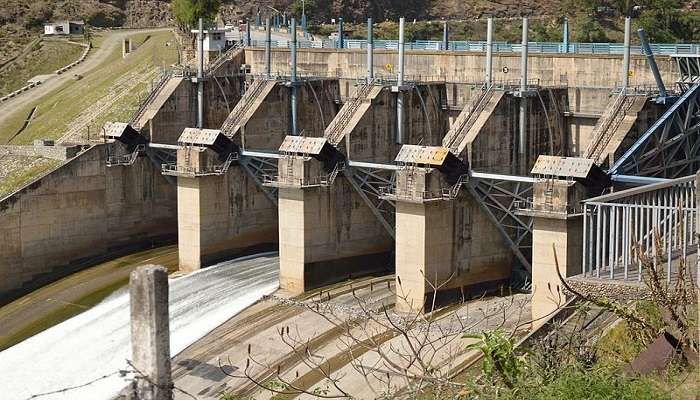
Situated near Pandoh town, this dam is built on the Beas River, 20 km from Mandi. The view of this dam is nothing less than a movie. Beautiful mountains surround it, with lush green forests and misty skies, making it the perfect place to visit and enjoy your vacation amidst the mountains.
Suggested Read: Places to Visit In Sangla
Route To Rewalsar Lake
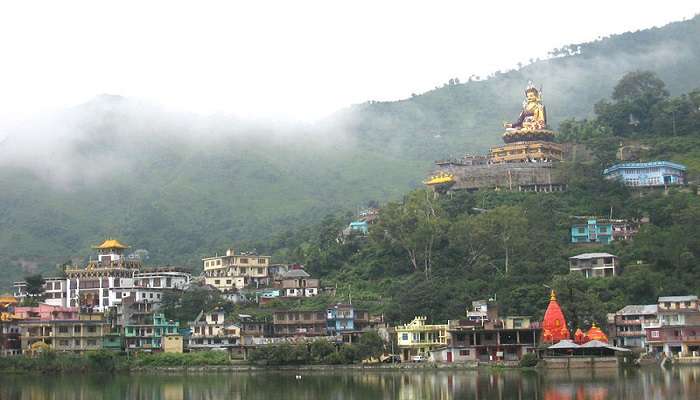
The roads in Uttrakhand are well-connected; you can take a bus or a taxi to Mandi. Buses commute to and fro from Mandi regularly, making travel easy.
The nearest airport is in Bhuntar, Kullu District. The railway station in Joginder Nagar is 78 km from the lake, from which you can take a taxi or a bus.
Further Read: Manali To Leh Road Trip
Now that you know all the crucial details about this wondrous lake, it is time for you to book your trip to Himachal Pradesh and see the Rewalsar Lake, which is a perfect blend of beauty, history, and culture hidden amongst the ranges of the Himalayas.
For our editorial codes of conduct and copyright disclaimer, please click here.
Cover Image Source: Shutterstock
Frequently Asked Questions About Rewalsar Lake
Why is the Rewalsar Lake famous?
The lake in the town of Mandi is famous for its floating reed islands and fishes. It is also famous due to its religious significance. Hindu, Buddhist, and Sikh shrines are around the lakeshore, adding to its importance.
How deep is the Rewalsar Lake?
The maximum depth of the lake is 82 ft. To put it into perspective, 82 ft is as long as four giraffes stacked on top of each other.
How many lakes are there in Himachal Pradesh?
There are over 25 reservoirs and lakes in the Indian state of Himachal Pradesh. The largest basin here is Renuka.
What are the top attractions to visit in Mandi?
Prashar Lake, Barot Valley, Rewalsar Lake, Shikari Devi Temple, Bada Dev - KamruNag Temple, and Barot Dam are some of the major attractions you can visit on your trip to Mandi.
When is the best time to visit Rewalsar Lake?
Though the lake can be visited any time of the year, the month from March to October is the best time to visit.
People Also Read:
Ba Be Lake Munich Lakes Finland Lakes

Unveil the hidden treasures of the globe and turn every travel dream into reality. As a Content Writer, I am passionate enough to craft stories from ancient wonders to modern marvels. My words paint the picture-perfect itinerary for unforgettable experiences. Let my words be your trusted guide to immerse in the diverse culture and discover the beauty of the unknown.



